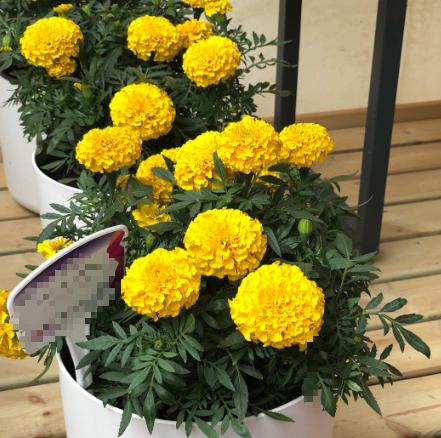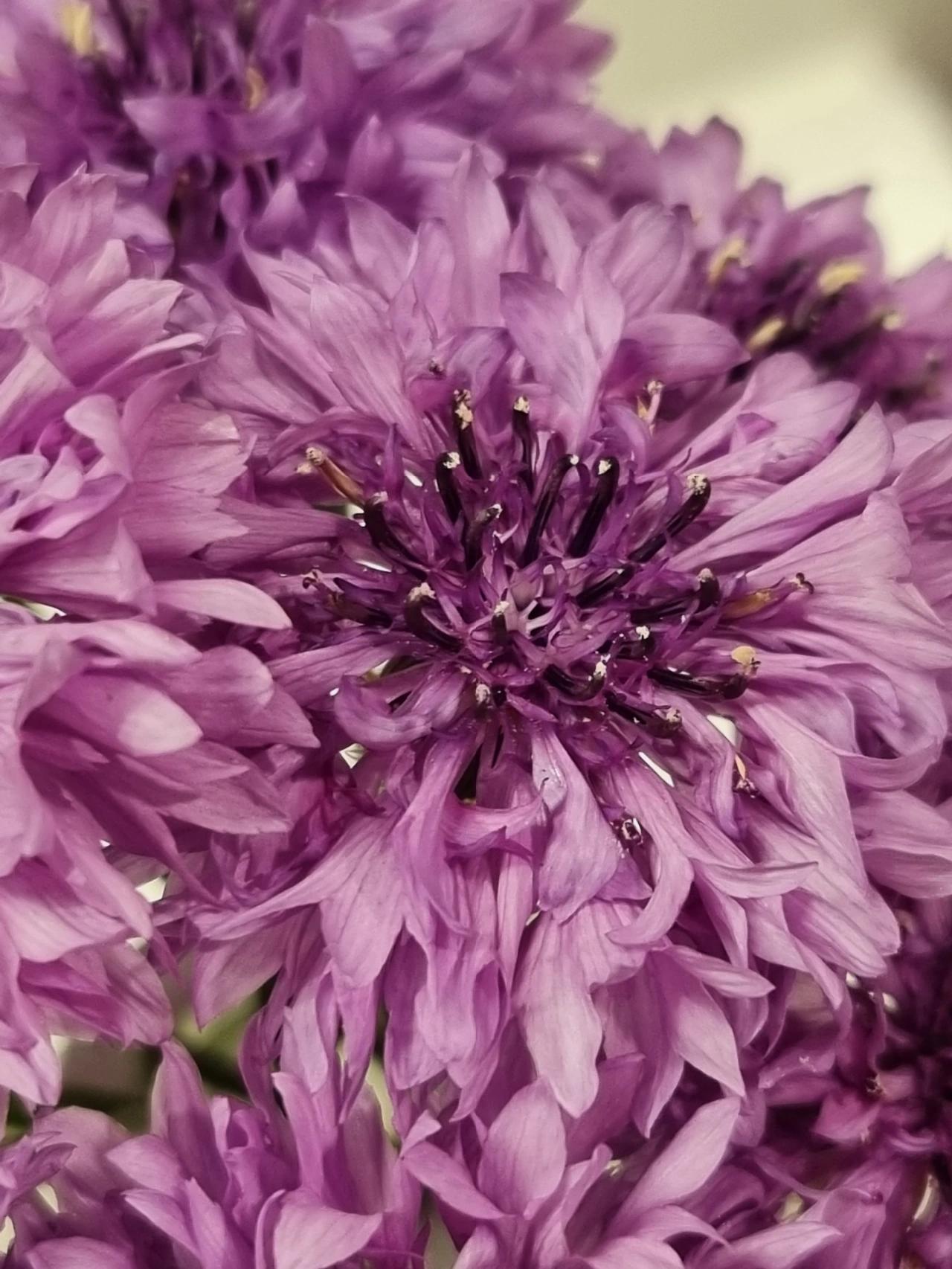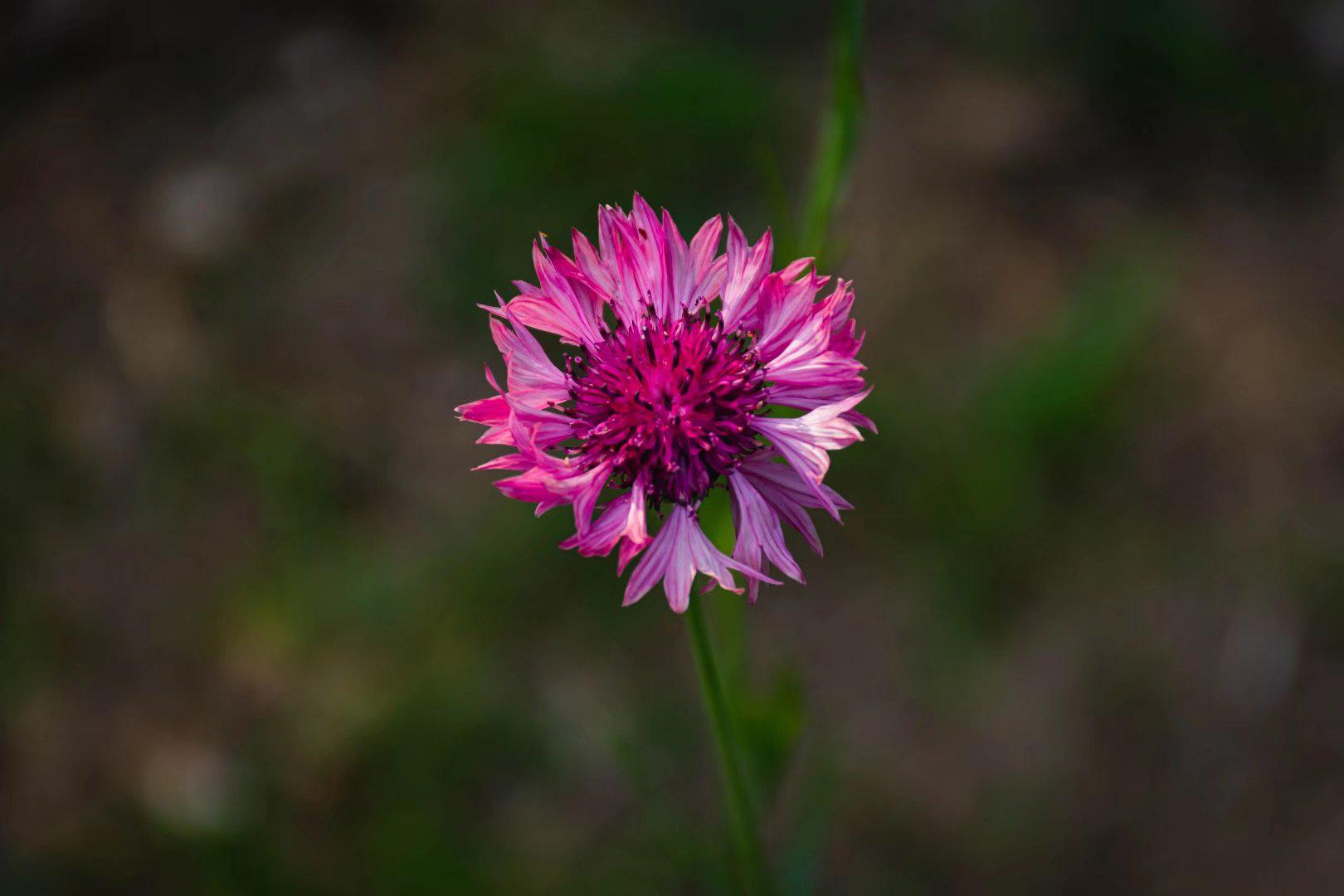Once upon a time, there was a Pelargonium plant named Rosie who lived in a small English garden. She never bloomed like other plants and felt sad. One day, a group of butterflies visited the garden and spoke to her secretively. They revealed that Rosie had a special power to produce a magical fragrance. Intrigued, Rosie began emitting a captivating scent that attracted bees, birds, and even humans. News spread, and people came from far and wide to experience her enchanting aroma. From that day on, Rosie embraced her uniqueness and became a celebrated Pelargonium, proving that sometimes, the most beautiful stories blossom from within.
Picture
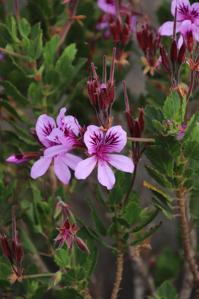
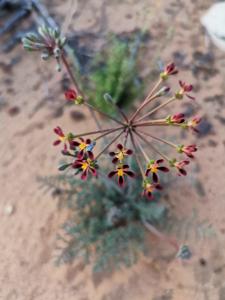
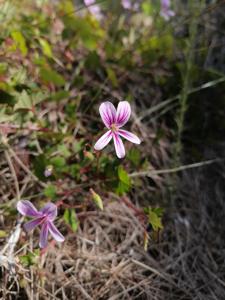
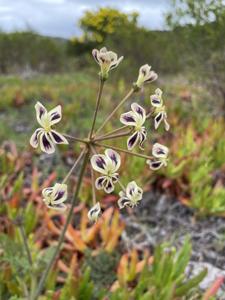
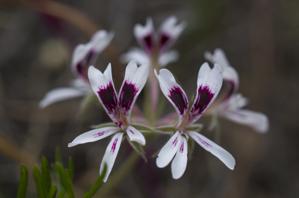
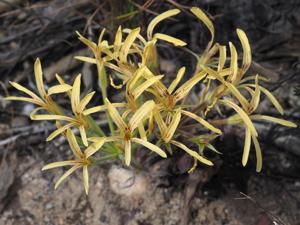
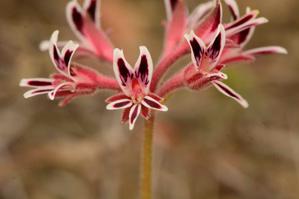
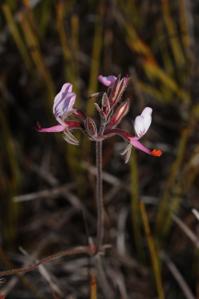
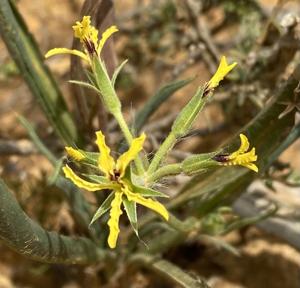
Plant some seeds now!
Short Description
Pelargonium flower macro
Pelargonium (/ˌpɛlɑːrˈɡoʊni.əm/) is a genus of flowering plants that includes about 280 species of perennials, succulents, and shrubs, commonly called geraniums, pelargoniums, or storksbills. Geranium is also the botanical name and common name of a separate genus of related plants, also known as cranesbills. Both genera belong to the family Geraniaceae. Carl Linnaeus originally included all the species in one genus, Geranium, and they were later separated into two genera by Charles Louis L’Héritier de Brutelle in 1789.
While Geranium species are mostly temperate herbaceous plants, dying down in winter, Pelargonium species are evergreen perennials indigenous to warm temperate and tropical regions of the world, with many species in southern Africa. They are drought and heat tolerant but can tolerate only minor frosts. Some species are extremely popular garden plants, grown as houseplants and bedding plants in temperate regions. They have a long flowering period, with flowers mostly in red, orange, or white, but intensive breeding has produced a huge array of cultivars with great variety in size, flower colour, leaf form and aromatic foliage.
Description
Pelargonium occurs in a large number of growth forms, including herbaceous annuals, shrubs, subshrubs, stem succulents and geophytes. The erect stems bear five-petaled flowers in umbel-like clusters, which are occasionally branched. Because not all flowers appear simultaneously, but open from the centre outwards, this is a form of inflorescence is referred to as pseudoumbels.
The flower has a single symmetry plane (zygomorphic), which distinguishes it from the Geranium flower, which has radial symmetry (actinomorphic). Thus the lower three (anterior) petals are differentiated from the upper two (posterior) petals. The posterior sepal is fused with the pedicel to form a hypanthium (nectary tube). The nectary tube varies from only a few millimeters, up to several centimeters, and is an important floral characteristic in morphological classification. Stamens vary from 2 to 7, and their number, position relative to staminodes, and curvature are used to identify individual species. There are five stigmata in the style. For the considerable diversity in flower morphology, see figure 1 of Röschenbleck et al. (2014).
Cultivation
Pelargonium triste, the first species of its genus to be cultivated, here shown in its native habitat in Cape Town
Various types of Pelargonium are regular participants in flower shows and competitive events, with numerous societies devoted exclusively to their cultivation. They are easy to propagate vegetatively from cuttings. It is recommended that cuttings should have at least two nodes. Zonal geraniums grow in U.S. Department of Agriculture hardiness zones 9 through 12. Zonal geraniums are basically tropical perennials. Although they are often grown as annuals, they may overwinter in zones as cool as zone 7.
Cultivation history
The first species of Pelargonium known to be cultivated was P. triste, a native of South Africa. It was probably brought to the Botanical Garden in Leiden before 1600 on ships which had stopped at the Cape of Good Hope. In 1631, the English gardener John Tradescant the elder bought seeds from Rene Morin in Paris and introduced the plant to England. By 1724, P. inquinans, P. odoratissimum, P. peltatum, P. vitifolium, and P. zonale had been introduced to Europe.
Cultivars
Zonal pelargonium
There was little attempt at any rational grouping of Pelargonium cultivars, the growing of which was revived in the mid-twentieth century, and the origins of many if not most were lost in obscurity. In 1916 the American botanist Liberty Hyde Bailey (1858–1954) introduced two new terms for zonal and regal pelargoniums. Those pelargoniums which were largely derived from P. zonale he referred to as P. × hortorum (i.e. from the garden), while those from P. cucullatum he named P. × domesticum (i.e. from the home). In the late 1950s a list (the Spalding List) was produced in the United States, based on nursery listings and the 1897 list of Henri Dauthenay. It described seven groups, listing each cultivar with the list of its originator, and in most cases a date. These were Species, Zonals, Variegated-Leaved, Domesticum (Regals), Ivy-Leaved, Scented-Leaved and Old. In the 1970s the British Pelargonium and Geranium Society produced a checklist and the Australian Geranium Society started to produce a register but it was not completed till its author, Jean Llewellyn’s death in 1999. None of these were published. The most complete list in its time was the 2001 compilation by The Geraniaceae Group, which included all cultivars up to 1959.
Registration of cultivars is the responsibility of the Pelargonium & Geranium Society (PAGS: formed in 2009 from the British Pelargonium and Geranium Society and the British and European Geranium Society) which administers the International Register of Pelargonium Cultivars. PAGS is the International Cultivar Registration Authority (ICRA) of the International Society for Horticultural Science for pelargoniums.
Contrasting leaves: Ivy-leaved Group (Left) Zonal Group (Right)
Cultivated pelargoniums are commonly divided into six groups in addition to species pelargoniums and primary hybrids. The following list is ordered by position in the PAGS classification. Abbreviations indicate Royal Horticultural Society usage.
A. Zonal (Z)
B. Ivy-leaved (I)
C. Regal (R)
D. Angel (A)
E. Unique (U)
F. Scented-leaved (Sc)
G. Species
H. Primary hybrids
Of these, A, U and Sc groups are sometimes lumped together as Species Derived (Sppd). This term implies that they are closely related to a species from which they were derived, and do not fit into the R, I or Z groups.
In addition to the primary groups, additional descriptors are used. The Royal Horticultural Society has created description codes. These include;
Cactus (Ca)
Coloured foliage (C)
Decorative (Dec)
Double (d)
Dwarf (Dw)
Dwarf Ivy-leaved (Dwl)
Frutetorum (Fr)
Miniature (Min)
Miniature Ivy-leaved (MinI)
Stellar (St)
Tulip (T)
Variegated (v)
These may then be combined to form the code, e.g. Pelargonium ‘Chelsea Gem’ (Z/d/v), indicating Zonal Double with variegated foliage. Crosses between groups are indicated with an ×, e.g. Pelargonium ‘Hindoo’ (R × U), indicating a Regal × Unique cross.
A. Zonal pelargoniums (Pelargonium × hortorum Bailey)
Pelargonium × hortorum (Zonal)
These are known as zonal geraniums because many have zones or patterns in the center of the leaves, this is the contribution of the Pelargonium zonale parent. Common names include storksbill, fish or horseshoe geraniums. They are also referred to as Pelargonium × hortorum Bailey. Zonal pelargoniums are tetraploid, mostly derived from P. inquinans and P. zonale, together with P. scandens and P. frutetorum.
Zonal pelargoniums are mostly bush-type plants with succulent stems grown for the beauty of their flowers, traditionally red, salmon, violet, white or pink. The scarlet colouring is attributed to the contribution of P. inquinans. Flowers may be double or single. They are the pelargoniums most often confused with genus Geranium, particularly in summer bedding arrangements. This incorrect nomenclature is widely used in horticulture, particularly in North America.
Zonals include a variety of plant types along with genetic hybrids such as hybrid ivy-leaved varieties that display little or no ivy leaf characteristics (the Deacons varieties), or the Stellar varieties. Hybrid zonals are crosses between zonals and either a species or species-derived pelargonium. There are hundreds of zonal cultivars available for sale, and like other cultivars are sold in series such as ‘Rocky Mountain’, each of which is named after its predominant colour, e.g. ‘Rocky Mountain Orange’, ‘White’, ‘Dark Red’, etc.
‘Rocky Mountain Orange’ (Zonal)
(i) Basic plants – Mature plants with foliage normally exceeding 180 mm (7 in) in height above the rim of the pot. For exhibition these should be grown in a pot exceeding 120 mm (4+3⁄4 in) in diameter but not normally exceeding 165 mm (6+1⁄2 in).
(ii) Dwarf plants – Smaller than basic. Mature plants with foliage more than 125 mm (5 in) above the rim of the pot, but not normally more than 180 mm (7 in). For exhibition should be grown in a pot exceeding 90 mm (3+1⁄2 in) but not exceeding 120 mm (4+3⁄4 in). They should not exceed 200 mm in height, grown in an 11 cm pot.
(iii) Miniature plants – Slowly growing pelargoniums. Mature plants with foliage normally less than 125 mm (5 in) above the rim of the pot. For exhibition should be grown in a pot not exceeding 90 mm (3+1⁄2 in). They should not exceed 125 mm in height, grown in a 9 cm pot.
(iv) Micro-miniature plants – Smaller and more slowly growing than miniature pelargoniums. Mature plants with foliage normally less than 100 mm (4 in) above the rim of the pot. They should not exceed 75 mm in height, grown in a 6 cm pot. Usually no separate classes for these in exhibition and will therefore normally be shown as Miniature Zonals.
(v) Deacon varieties –Genetic hybrid similar to a large Dwarf. For exhibition (when shown in a separate class), usually grown in a pot not exceeding 125 mm (5 in), otherwise as for Dwarf Zonals.
(vi) Stellar varieties – A relatively modern genetic hybrid originating from the work done by the Australian hybridiser Ted Both in the late 1950s and 1960s from crosses between Australian species and Zonal types. Easily identifiable by their distinctive half-star-shaped leaves and slim-petalled blooms which create an impression of being star shaped (or five fingered). Single varieties tend to have larger elongated triangular petals whereas doubles tend to have thin feathered petals that are tightly packed together. For exhibition purposes there is a separate class for ‘Stellar’ varieties, but being Zonals could be shown in an open class for Basic, Dwarf or Miniature Zonals (unless otherwise stated). Also known as “The Five-fingered Geraniums”, “Staphysagroides”, “Both’s Staphs”, “Both’s Hybrid Staphs”, “Fingered Flowers” and “Bodey’s Formosum Hybrids”.
Fancy-leaf zonal pelargoniums – besides having green leaves with or without zoning, this group also have variable coloured foliage that is sometimes used in classifying for exhibition purposes, e.g. ‘Bicolour’, ‘Tricolour’, ‘Bronze’ or ‘Gold’. Other foliage types are: ‘Black’ or ‘Butterfly’. There are an increasing number of these plants with showy blooms;
(a) Bicolour – includes those with white or cream veined leaves or those with two distinct colours with clearly defined edges, other than the basic zone.
(b) Tricolour – (May be Silver Tricolour (usually called a Silver Leaf) or a Gold Tricolour).
(i) Gold Tricolour – Leaves of many colours including red and gold, but usually with clearly defined edges of golden yellow and having a leaf zone, usually red or bronze, that overlays two or more of the other distinct leaf colours, so that the zone itself appears as two or more distinct colours.
(ii) Silver Tricolour or Silver Leaf – These tend to resemble a normal bi-colour leaf plant with two distinct colours usually of green and pale cream or white; the third colour is usually made up of bronze zoning. When this zoning overlays the green part of the leaf it is deemed to represent a silver colour.
(c) Bronze Leaved – Leaves of Green or Golden/Green with a heavy bronze or chestnut coloured centre zone which is known as a medallion. For exhibition purposes, when exhibited in specific ‘Bronze’ Leaf class – Must have over 50% of leaf surface bronze coloured. The dwarf plant ‘Overchurch’ which has a heavy bronze medallion.
(d) Gold Leaved – Leaves coloured golden/yellow or green/yellow but not showing a tendency to green. For exhibition purposes, when exhibited in specific ‘Gold’ Leaf class – Must have over 50% of leaf surface gold coloured.
(e) Black Leaved – Leaves coloured black, purple-black or with distinct large dark zones or centre markings on green.
(f) Butterfly Leaved – Leaves with a butterfly marking of distinct tone or hue in centre of leaf. This can be encompassed in many of the coloured leaf varieties.
Zonal pelargoniums have many flower types, as follows:
(a) Single flowered (S) – each flower pip normally having no more than five petals. This is the standard flower set for all Pelargoniums.
(b) Semi-double flowered (SD) – each flower pip normally having between six and nine petals.
(c) Double flowered (D)– each flower pip composed of more than nine petals (i.e. double the standard flower set) but not ‘hearted’ like the bud of a rose, e.g. the dwarf ‘Dovepoint’ which has full double blooms.
(d) Rosebud (or noisette) flowered – each bloom fully double and ‘hearted’. The middle petals are so numerous that they remain unopened like the bud of a rose.
(e) Tulip flowered – having semi-double blooms that never fully open. The large cup shaped petals open just sufficiently to resemble a miniature tulip.
(f) Bird’s-egg group – having blooms with petals that have spots in a darker shade than the base colour, like many birds eggs.
(g) Speckled flowered group – having petals that are marked with splashes and flecks of another colour, e.g. ‘Vectis Embers’.
(h) Quilled (or cactus-flowered group, or poinsettia in USA) – having petals twisted and furled like a quill.
“Zonquil” pelargoniums result from a cross between Zonal pelargonium cultivars and P. quinquelobatum.
B. Ivy-leaved pelargoniums (derived from Pelargonium peltatum)
Pelargonium peltatum (Ivy-leaved)
Also known as “ivy geraniums”.Usually of lax growth (trailing), mainly due to the long thin stems, with thick, waxy ivy-shaped stiff fleshy evergreen leaves developed by the species P. peltatum to retain moisture during periods of drought. Much used for hanging pots, tubs and basket cultivation. In the UK the bulbous double-headed types are preferred whilst on the European continent the balcon single types for large-scale hanging floral displays are favoured. Ivy-leaved pelargoniums embrace all such growth size types including small-leaved varieties and genetic hybrid crosses, which display little or no zonal characteristics. May have bicolour leaves and may have flowers that are single, double or rosette. Ivy pelargoniums are often sold as series such as ‘Great Balls of Fire’, in a variety of colours such as ‘Great Balls of Fire Burgundy’.
Additional descriptive terms include;
Hybrid Ivy — the result of ivy × zonal crosses, but still more closely resemble ivy-leaved pelargoniums.
Fancy leaf — leaves with marked color variation, together with or other than green.
Miniature — miniature leaves and flowers, stems with short nodes, and compact growth. e.g. ‘Sugar Baby’ listed as Dwarf Ivy (DwI) by RHS.

